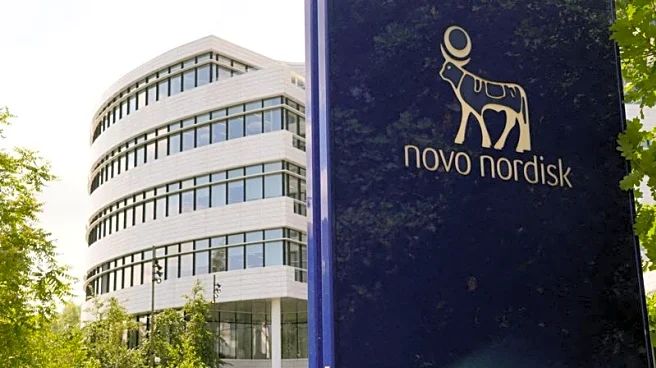What's Happening?
The third quarter of 2025 has seen a dramatic increase in layoffs within the biopharma industry, with a reported 280% year-over-year spike in affected employees. Major companies such as Merck, CSL, and
Novo Nordisk have announced significant workforce reductions as part of their restructuring efforts. Merck plans to lay off approximately 6,000 employees globally, while CSL is parting ways with 15% of its workforce, affecting around 4,350 employees. Novo Nordisk has also announced plans to cut about 9,000 jobs. Other companies like Sarepta, Moderna, and Lundbeck have also contributed to the layoffs, with Sarepta letting go of around 500 employees and Moderna downsizing by about 10%, affecting 550 people. Lundbeck plans to exit 27 markets, impacting 602 employees. These layoffs have predominantly affected states like California and Massachusetts, with significant cuts reported in cities such as Andover, Cambridge, and Bedford, Massachusetts.
Why It's Important?
The surge in layoffs within the biopharma sector highlights the ongoing challenges faced by the industry, including cost-cutting measures and strategic restructuring. These workforce reductions could have significant implications for the U.S. economy, particularly in states heavily reliant on the biopharma industry. The layoffs may lead to increased unemployment rates and economic instability in affected regions. Additionally, the reduction in workforce could impact the pace of research and development, potentially slowing down the introduction of new products and innovations in the healthcare sector. Companies are attempting to redirect savings from layoffs into R&D to support the launch of new products, which could be crucial for maintaining competitiveness in the global market.
What's Next?
As the industry continues to navigate these restructuring efforts, further layoffs may be anticipated in the fourth quarter, although they may not reach the levels seen in Q3. Companies are likely to continue evaluating their operational strategies to optimize costs and improve efficiency. The focus on R&D investment suggests a potential shift towards innovation and product development, which could lead to new opportunities and growth in the long term. Stakeholders, including employees, investors, and policymakers, will be closely monitoring these developments to assess their impact on the industry and the broader economy.













